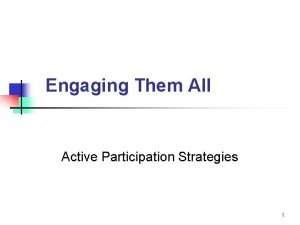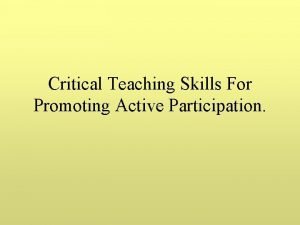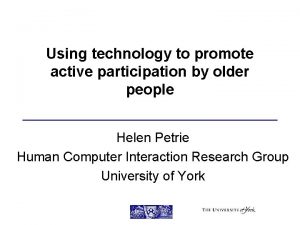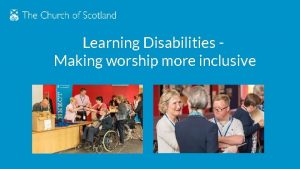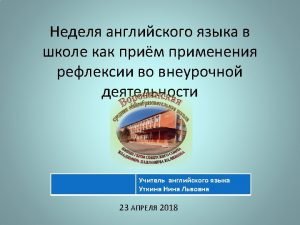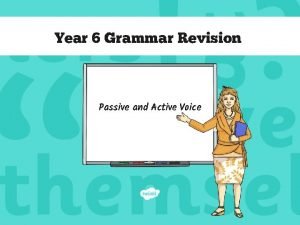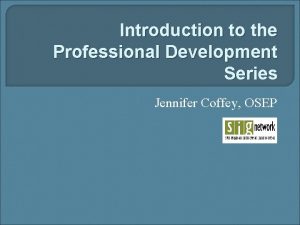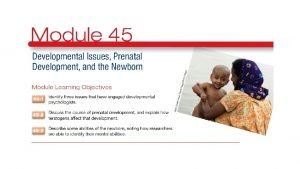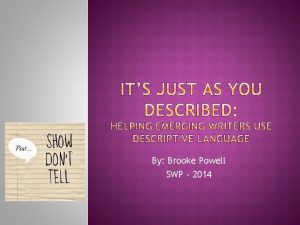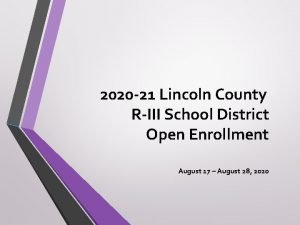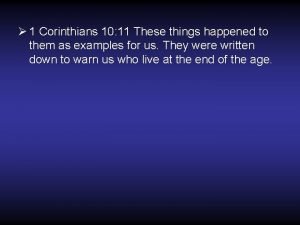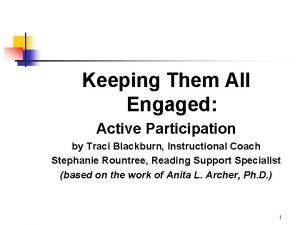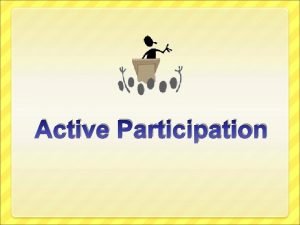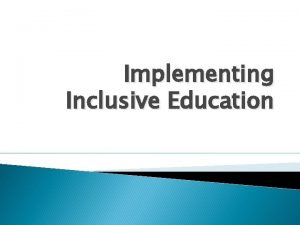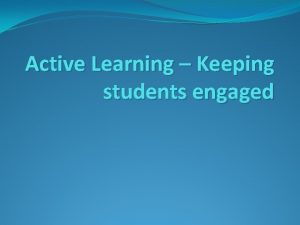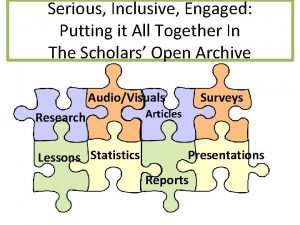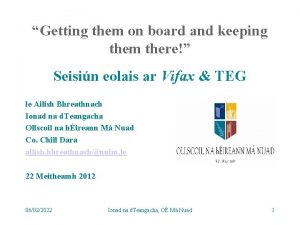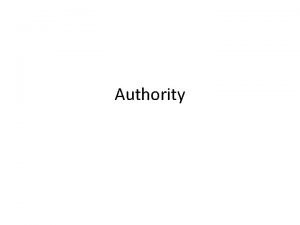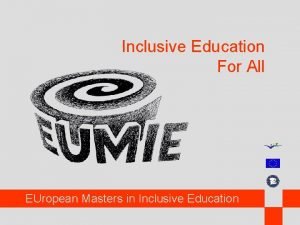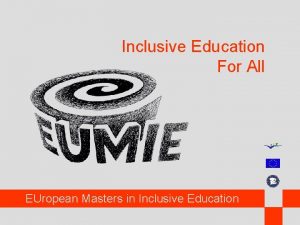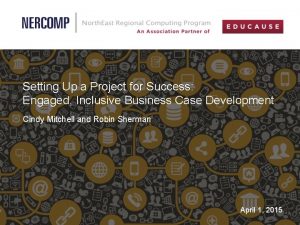Getting Them All Engaged Inclusive Active Participation From





















- Slides: 21

Getting Them All Engaged: Inclusive Active Participation From: Anita Archer 1

Active Participation - Why? n Opportunities to respond related to: n n n Increased academic achievement Increased on-task behavior Decreased behavioral challenges 2

Active Participation - What? Opportunities to Respond Verbal Responses Written Responses Action Responses All Students Respond. When possible use response procedures that engage all students. 3

Verbal Responses Choral Responses (Use when answers are short & the same. ) n Students are looking at the teacher. n n Ask a question. Put up your hands to indicate silence. Give thinking time. Lower your hands as you say, “Everyone. ” Students are looking at a common stimulus. n n Point to the stimulus. Ask a question. Give thinking time. Tap for a response. 4

Verbal Responses Choral Responses n Students are looking at their own book/paper. n n n Ask a question. Use an auditory signal (“Everyone. ”). Hints for Choral Responses n n n Give adequate thinking time. Have students put up their thumbs to indicate enough thinking time. If students don’t respond or blurt out an answer, repeat. 5

Verbal Responses Partners (Use when the answers are long or different. ) n Partners n n n Assign partners. Pair lower performing students with middle performing students. Give partners a number (#1 or #2). Sit partners next to each other. Utilize triads when appropriate. 6

Verbal Responses Partners n Other hints for partners n n n Give students a “sentence starter. ” Teach students how to work together. LOOK, LEAN, AND WHISPER. Have students come to the “rug area” with their desk partner so that new partners do not have to be assigned. To facilitate partners at small group tables, tape cards on the table with the numbers #1 and #2 and arrows pointing to each partner. Change the partnerships occasionally (every three to six weeks). 7

Verbal Responses. Partners Uses of partners. 1. 2. 3. 4. 5. Say answer to partner. Retell content of lesson using a graphic organizer. Brainstorm (Think, Pair, Share). Explain process, strategy, or algorithm using examples. Read to or with partner. 8

Verbal Responses Partners Other Uses of partners. 1. Monitor partner to see if directions are followed 2. Share materials with partners. 3. Assist partners during independent work. 4. Collect papers, handouts, assignments for absent partners. 9

Active Participation n Think n n n Pair n n n Have students think and record responses. As students are writing, move around the classroom and record their ideas and their names on an overhead transparency. Have students share their ideas with their partners. Have them record their partner’s best ideas. As students are sharing, continue to record ideas on the overhead. Share n Use the transparency for sharing with the class. 10

Verbal Responses Individual Turns n Less desirable practices #1. Calling on volunteers. Guidelines: n n Call on volunteers when the answer is a product of personal experience. Don’t call on volunteers when the answer is a product of instruction or reading. Instead expect that all students could answer your question. #2. Calling on inattentive students. 11

Verbal Responses Individual Turns n Option #1 - Partner First - Have students share answers with their partners. - Call on a student. n Option #2 - Question First - Ask a question. - Raise your hands to indicate silence. - Give thinking time. - Call on a student. ���� 12

Verbal Responses Individual Responses Option #3 - Whip Around or Pass n This strategy is best used when there are many possible answers to a question. n Ask the question. n Give students thinking time. n Start at any location in the room. Have students quickly give answers going up and down the rows without commenting. Students are allowed to pass if they do not have a response or someone has already shared the same idea. 13

Verbal Responses. Individual Turns n Procedures for calling on students to insure that all students are involved. Procedure #1 - Call on students in different parts of the room. Procedure #2 - Write names on cards or sticks. Draw a name. 14

Verbal Responses Individual Turns n If a student is called on and says “I don’t know” scaffold his/her response. Procedure #1 - Guide the student to the answer. Procedure #2 - Have student consult with his/her partner. Procedure #3 - Have student refer to his/her book. Procedure #4 - Have student tell the “best” of previous answers. Procedure #5 - Tell student an answer. 15

Written Responses n Written response n n Gauge the length of the written response to avoid “voids”. n Make the response fairly short OR n Make the response “eternal. ” To keep students from “sneaking” ahead. n n Expose limited items on the overhead. OR Have students put their pencils down to indicate completion OR have them turn their paper over. 16

Written Responses n Response Slates n n Give a directive. Have students write their answers on individual whiteboards, slates, or chalkboards. When adequate response time has been given, have students display their slates. Give feedback to students. 17

Written Responses Response cards n Have students write possible responses on cards or paper or provide them with prepared cards. Examples: Simple responses: Yes, No; Agree, Disagree Graphemes: sh, wh, ch, th Punctuation Marks: . ? ! , Math Operations: + - X Types of Rocks: Igneous, metamorphic, sedimentary Vocabulary Terms: perimeter, area n Ask a question. Have students select best response and hold it under their chin. Ask students to hold up response card. Carefully monitor responses and provide feedback. n NOTE: Electronic “clickers” are the high tech version of response cards. n n n 18

Action Responses n Touch stimulus. n n Ask students to “Put their finger” on stimulus. Increases attention given to stimulus. Allows monitoring to determine if students are looking at the desired stimulus. Act out. n Students act out story, concept, or process. 19

Action Responses n Gestures n n Students use gestures to indicate answer or to facilitate recall of process. Facial Expressions n Students indicate answer by changing facial expression. (“Show me glum. ” Show me not glum. ”) 20

Action Responses Hand signals. n n n Use thumbs up/thumbs down to indicate yes/no or agree/disagree. Level of understanding. Students place their hand to indicate level of understanding (high-forehead, OK-neck, low-abdomen). OR Write items on the board/overhead and number them. (1. concentrate, 2. absurd, 3. enemy, 4. disgusting) n Carefully introduce and model hand signals. n Ask a question. Have students form answers on their desk. n When adequate thinking time has been given, have students hold up their hands showing responses. 21
 Symbol dari weak entity
Symbol dari weak entity The secret to getting ahead is getting started
The secret to getting ahead is getting started Define active community participation
Define active community participation Active participation strategies
Active participation strategies Promoting active participation
Promoting active participation Promote active participation
Promote active participation What can we do to make worship more inclusive for all
What can we do to make worship more inclusive for all If you can t beat them join them
If you can t beat them join them Name all rays
Name all rays Active vs passive revision
Active vs passive revision Is jennifer coffey engaged
Is jennifer coffey engaged What three issues have engaged developmental psychologists?
What three issues have engaged developmental psychologists? Brooke powell engaged
Brooke powell engaged Gloria jean watkins
Gloria jean watkins Nathan goshen engaged
Nathan goshen engaged United healthcare simply engaged
United healthcare simply engaged And or boolean
And or boolean Primary vs secondary active transport
Primary vs secondary active transport Primary active transport vs secondary active transport
Primary active transport vs secondary active transport I steal by lawns and grassy plots
I steal by lawns and grassy plots Hauptcarina
Hauptcarina All these things happened to them as examples
All these things happened to them as examples



